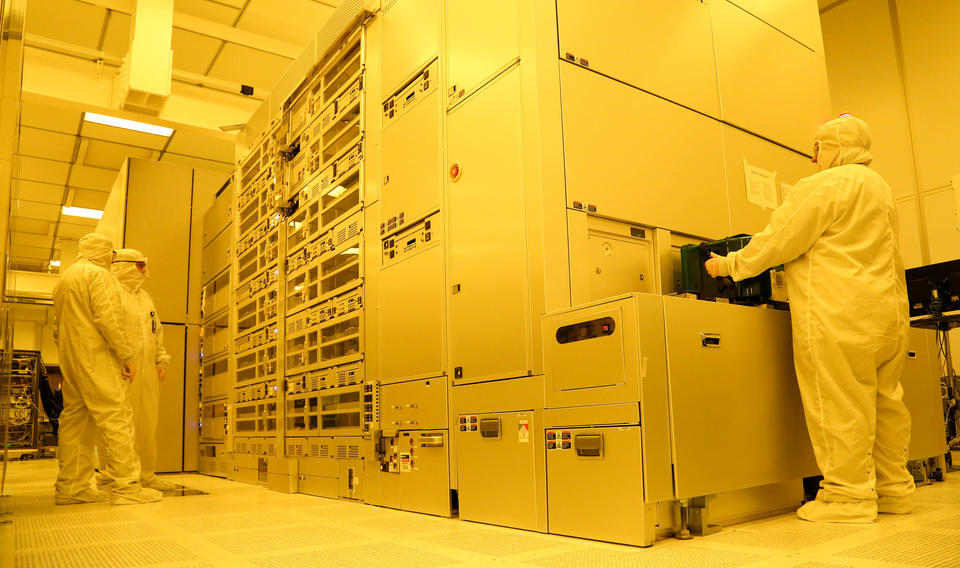NIST and AIM Photonics Team Up on High Frequency Optical/Electronic Chips
Collaborative effort will enable new chip designs for high-speed communications.

Clean-room technicians at the AIM Photonics NanoTech chip fabrication facility in Albany, New York.
GAITHERSBURG, Md. — The U.S. Department of Commerce’s National Institute of Standards and Technology (NIST) has entered into a cooperative research and development agreement with AIM Photonics that will give chip developers a critical new tool for designing faster chips that use both optical and electrical signals to transmit information. Called integrated photonic circuits, these chips are key components in fiber-optic networks and high-performance computing facilities and are used in laser-guided missiles, medical sensors and other advanced technologies.
AIM Photonics, a Manufacturing USA institute, is a public-private partnership that accelerates the commercialization of new technologies for manufacturing photonic chips. The New York-based institute provides small and medium-sized businesses and academic and government researchers access to expertise and fabrication facilities during all phases of the photonics development cycle, from design to fabrication and packaging.
As part of the new collaboration, NIST will design electrical “calibration structures” that can be used to measure and test the electronic performance of photonic chips. This will result in improved designs and will accelerate the development of photonic chips faster than today’s, which typically operate at speeds up to 25 gigahertz (GHz). The new calibration structures will be capable of measuring chips with speeds of up to 110 GHz.
“This effort will leverage NIST’s expertise in chip measurements, calibration and integrated device modeling,” said Under Secretary of Commerce for Standards and Technology and NIST Director Laurie E. Locascio. And while planning for this effort began before the passage of the CHIPS Act, it aligns with the act’s goals. “This shows how government and industry can work together to drive innovation and restore U.S. global leadership in semiconductor manufacturing,” Locascio said.
In addition, AIM Photonics will incorporate these calibration structures into its process design kit, a tool that engineers use when designing new chips for fabrication at AIM’s facilities.
“Accurate measurements are key to advancing high-speed communications,” said David Harame, AIM Photonics’ chief operating officer. “These enhancements will give our members and customers the tools they need to design the next generation of advanced photonic chips.”
Experts from both organizations are already working to integrate the new measurement structures into AIM Photonics’ foundry process, and an updated process design kit with the calibration structures should be available to users in approximately one year.
Editor’s Note (12/21/2022): The third paragraph of this article has been reworded to clarify that photonic chips with speeds as high as 110 GHz are not yet in development.

